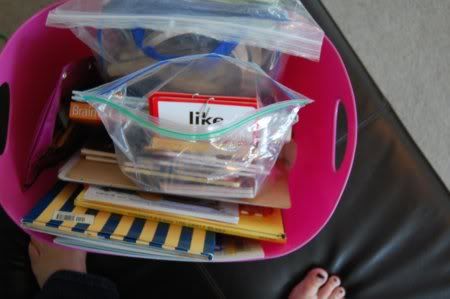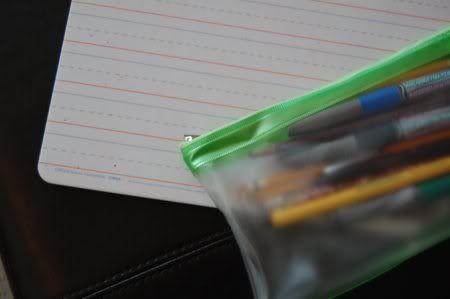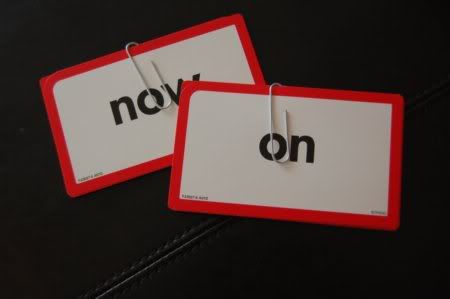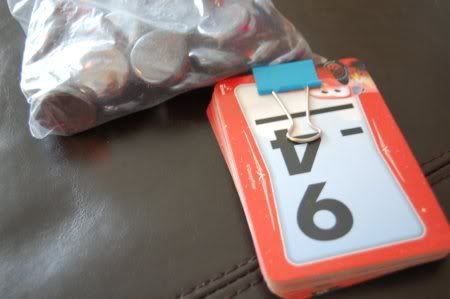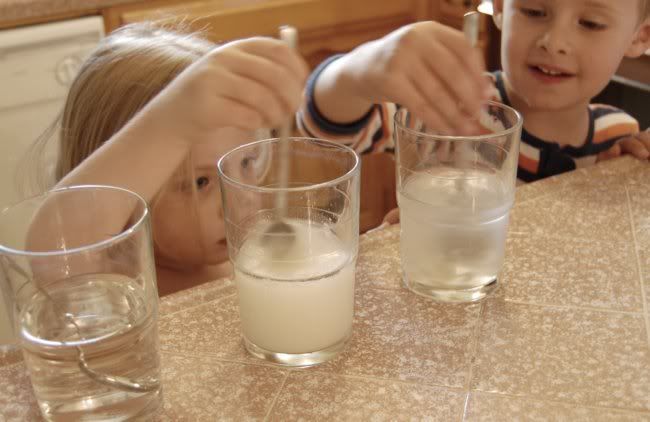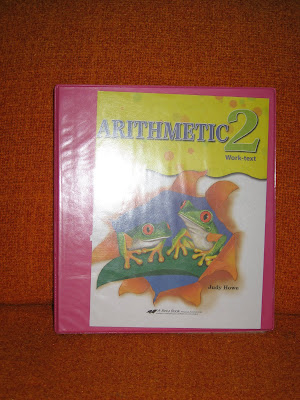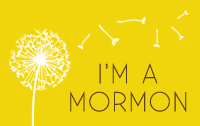Miriam and I experienced a little math miracle the other day. In that Miriam begged me to continue doing math after I'd told her she could stop.
I'm sure you remember that Miriam, with my help, learned to dislike math last year. I was too rigid. Taught too much out of the math book. Pushed when I should have eased up, and, in general, did whatever possible to kill all math love.
It was an accident. But still.
This year I've done a few things to try and rekindle in her a love for math. My most important strategy is to use children's picture books to teach the concepts and then only practice until she is proficient and then stop practicing. That sounds basic, but last year I got really hung up on doing all the problems on the page. Big mistake.
Back to the miraculous math day. A few weeks ago, I noticed that fractions were coming up in Miriam's math book. I immediately called my sister and begged to borrow this book:
I'm sure you remember that Miriam, with my help, learned to dislike math last year. I was too rigid. Taught too much out of the math book. Pushed when I should have eased up, and, in general, did whatever possible to kill all math love.
It was an accident. But still.
This year I've done a few things to try and rekindle in her a love for math. My most important strategy is to use children's picture books to teach the concepts and then only practice until she is proficient and then stop practicing. That sounds basic, but last year I got really hung up on doing all the problems on the page. Big mistake.
Back to the miraculous math day. A few weeks ago, I noticed that fractions were coming up in Miriam's math book. I immediately called my sister and begged to borrow this book:

It is pretty much one of the best math books ever written.
My dad gave it to my sister a few years ago, and it has been a favorite of her family (and me) ever since. I knew that Miriam would love the elves, the info about apples, and the adorable illustrations. It was a must going into fractions.
So the day of "intro to fractions," I told Cowen he was done with school for the day and then told Miriam it was time to start her math. Predictable whining started until she noticed that I was on the couch. With a book in my hand. Immediately, she and Cowen were rushing over to sit by me and see what the book was about. Math is so much more exciting on the couch than at the table.
We read the book together. It took a long time. We giggled over the pictures, counted up how many elves were purple vs. green (etc. etc), discussed the apple facts and our favorite kinds of apples, and also managed to discuss the fractions.
Then, just to keep the reading enthusiasm up, we read this other book my sister dropped off at the same time:
My dad gave it to my sister a few years ago, and it has been a favorite of her family (and me) ever since. I knew that Miriam would love the elves, the info about apples, and the adorable illustrations. It was a must going into fractions.
So the day of "intro to fractions," I told Cowen he was done with school for the day and then told Miriam it was time to start her math. Predictable whining started until she noticed that I was on the couch. With a book in my hand. Immediately, she and Cowen were rushing over to sit by me and see what the book was about. Math is so much more exciting on the couch than at the table.
We read the book together. It took a long time. We giggled over the pictures, counted up how many elves were purple vs. green (etc. etc), discussed the apple facts and our favorite kinds of apples, and also managed to discuss the fractions.
Then, just to keep the reading enthusiasm up, we read this other book my sister dropped off at the same time:

It is not as brilliant as Apple Fractions, but it is a great visual resource for fractions. I was going to completely skip the fractions and decimals, but Miriam liked reading the numbers, so she did.
After reading the books, I told Miriam she needed to do a page about fractions in her math book. Still intrigued by fractions, thanks to the books, she happily went to the table (while Cowen disappeared somewhere--that was good too). She did the page on fractions, then another page on fractions.
Then she saw a page about greater than/less than/equal to that she insisted I explain to her. I wasn't going to at first because I had wanted to get a book to introduce that, but really--how do you say no when your child is insisting you teach her something? You can't. You don't.
So, she learned another new concept. Thanks to the wonderful creators of Mathematical Reasoning from the Critical Thinking Co. all the pages of practice for the greater than/less than/equal to concept were really fun and Miriam loved them. For example, on one page there were pictures of animals. Each type of animal was assigned a number. Then you had to do things like figure out which animal subract two equalled another animal. The answers to the problems included things like: pigs plus three equals dogs. Miriam thought it was hilarious.
After two pages of that, I told Miriam it was time to stop for the day. Before putting the book away, Miriam started flipping through it and found two more pages about fractions. She begged to be allowed to do them.
Amazing.
Absolutely amazing.
I realize this was lengthier than necessary, but sometimes it feels good to be able to write about a true, blessed success--one where you figured out what you were doing wrong and found a few things that work better.
If nothing else, you now know about Apple Fractions and your life can only be better for it.





